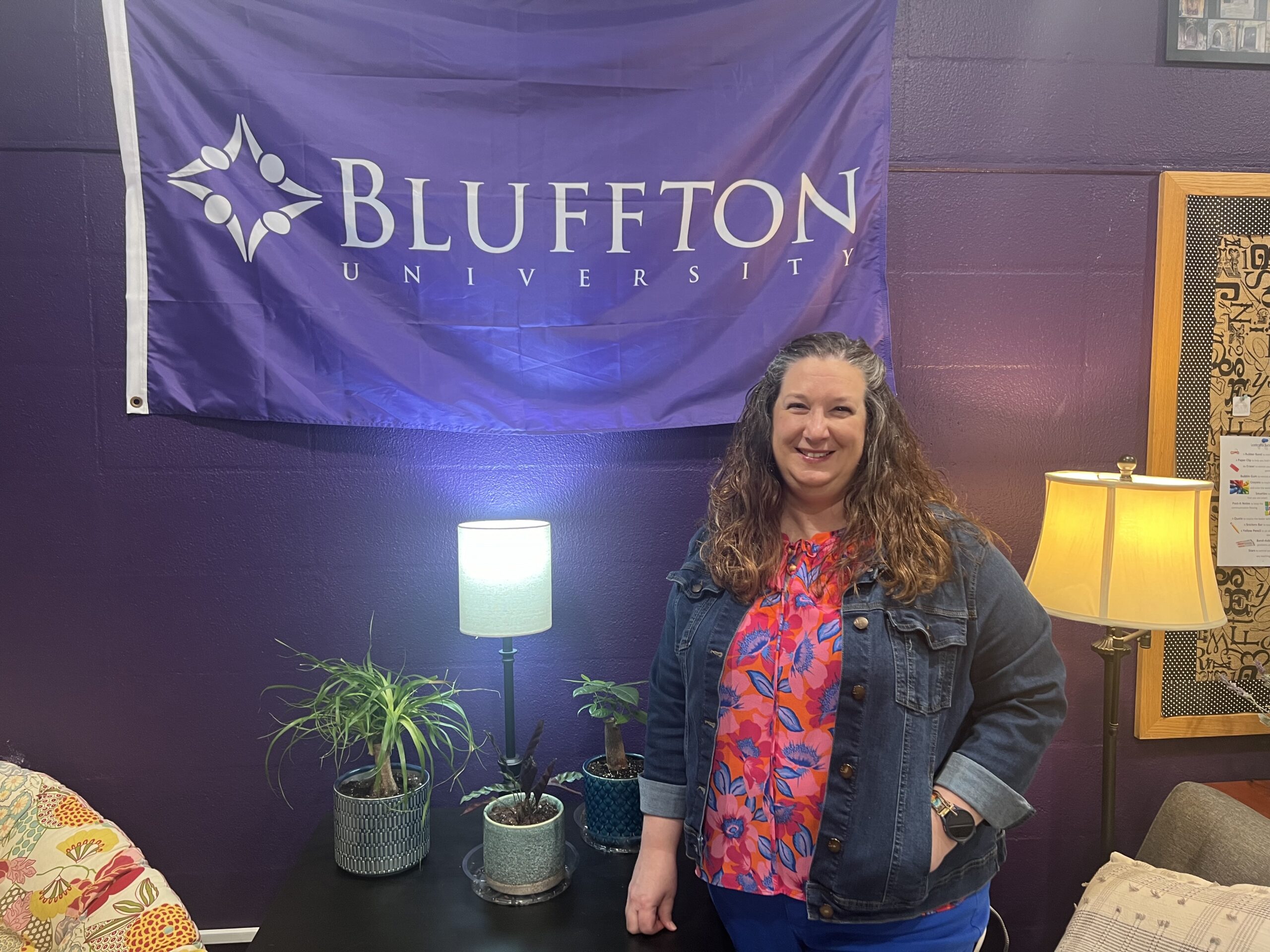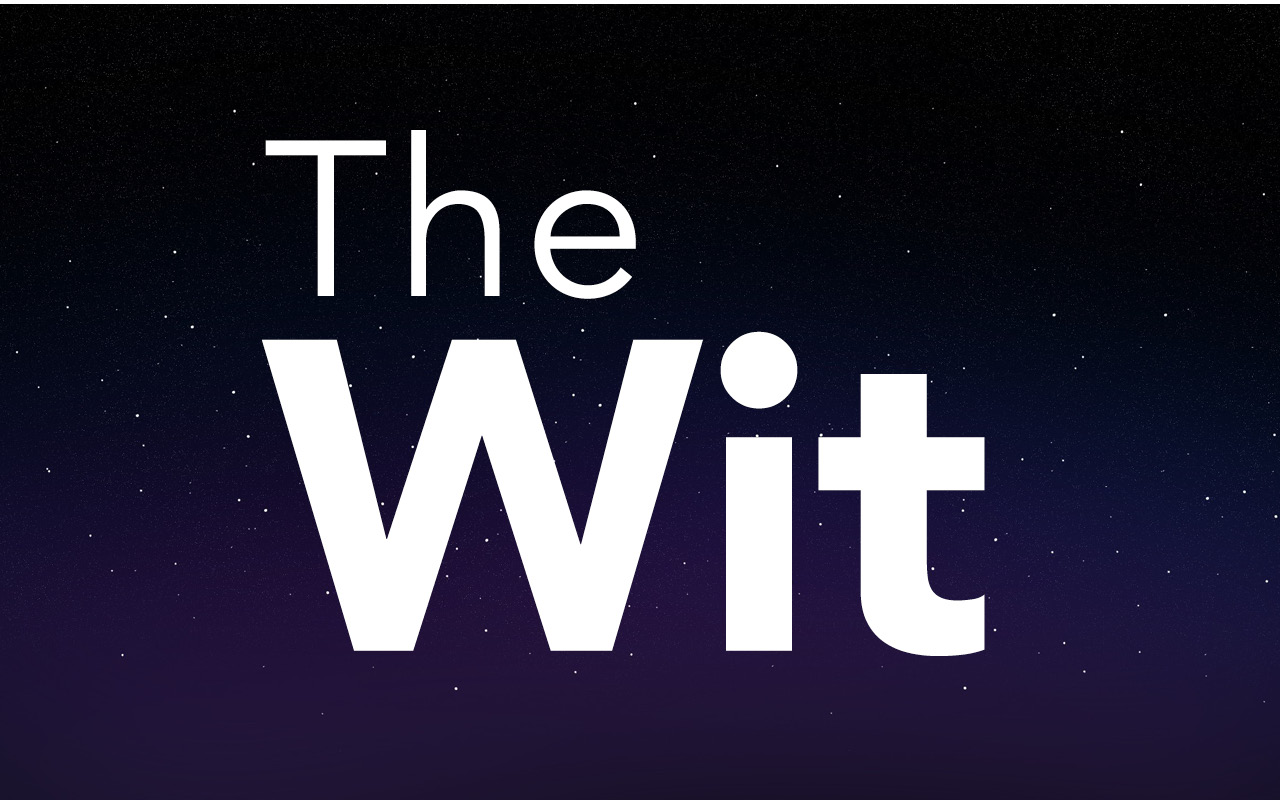The end of the semester means the due dates for final semester projects are quickly approaching. In the past several weeks, all first-year students taking Becoming a Scholar put the finishing touches their course projects. Here’s a look at some of this year’s Becoming a Scholar projects.
Abby Broseke
Nursing major Abby Broseke decided to research holistic approaches to pain management versus the use of narcotics. Her topic was inspired by a very personal connection. Broseke said her uncle became addicted after getting a narcotics prescription following a work accident where he cut off his finger. After being addicted for many years, he recently passed away due to the addiction.
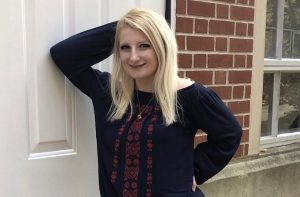
Abby Broseke, photo courtesy Abby Broseke
In her research, Broseke said she found there are a lot of viable options a person can try before turning to narcotics. Essential oils are one such option, which a person could use on a different body parts to help manage pain. There are also specific foods, such as cayenne peppers, that help with pain.
For her presentation, Broseke created a medical bag filled with treatment options that no do include narcotics.
“I got all of these holistic medicines, or pictures of the medicines, and I put them all in this bag,” Broseke said. “ I included a contents list and how that specific item would help in the process of healing. There’s essential oils, there’s some pictures, there’s a yoga mat, a pocket watch for hypnosis.”
Broseke said she hopes her project leaves a lasting impact on her peers.
“I hope that the one thing that students would take away from this project is that they can help themselves and their families,” Broseke said. “Use these things first, try this first, instead of just going to the doctor and getting opioids and possibly becoming addicted to them.”
Chase Masters
Chase Masters opted to research a topic in his field of study, pre-chiropractic. He researched the effects of looking down at your phone, and the stress that is put on your neck as a result.
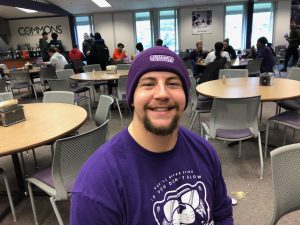
Chase Masters, photo by Aubrey Bartel
“This project is important to me because it follows my career, and it’s opening my eyes on what I’m going to be getting into once I get into the workforce,” Masters said.
Masters said he discovered the head weighs between 12 and 13 pounds, so staring down at your phone for multiple hours a day puts a lot of tension on the atlas and axis vertebrae. This can lead to symptoms such as headache, loss of sleep, neck and shoulder pain and numbness in the fingers.
He conducted a survey using first-year football players, asking them symptoms they’re experiencing from using their phone and how much time they typically spend on their phone a day. He found many of the players are on their phone between four to seven hours.
Masters created a commercial video to display his information.
“The video involved a lot of me and my peers getting together and talking about how I was as a chiropractor,” Masters said. “I was a pretend chiropractor in the video, and then towards the end I gave the information that I found in my survey that I chose to do.”
Masters said he hopes the information he presents will benefit his fellow students in the long run.
“Hopefully the end information is that they learn to prop their neck up a little bit more when they’re looking at their phone to avoid some serious problems that may occur down the road,” Masters said.
Zac Nobis
Zac Nobis was able to combine his passion of football with his family background when he chose to research Chronic Traumatic Encephalopathy (CTE) as the the topic for his Becoming a Scholar project.
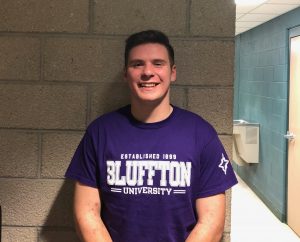
Zac Nobis, photo by Aubrey Bartel
“I’ve had a great uncle who had this disease, but also I play football and it’s most prominent in football players,” said Nobis. “Because football is my first love as a sport, and I’ve played it since I was a little kid, this topic seemed to fit.”
Nobis focused specifically on tau proteins, which he said are the cause of CTE. He said the most interesting part of the project was discovering these proteins are actually made within the brain.
He created two different brains for his project, one that was healthy and one that was a CTE brain, meaning it was smaller and degenerated. He also color coded the different parts of the brain by painting them.
The overall goal of Nobis’s project was to raise awareness about CTE.
“[I hope this helps with] raising awareness of mental health and other issues that you may not know that you have at the time, or that others are struggling with,” Nobis said. “It’s important to always be courteous because you never know what other people are dealing with or going through.”
Daisy Martinez
For Daisy Martinez’s project, she wanted to focus on her roots. Martinez is an international student, coming to Bluffton from Honduras. Part of Martinez’s goal was to help educate students on the differences between Honduras and the United States.
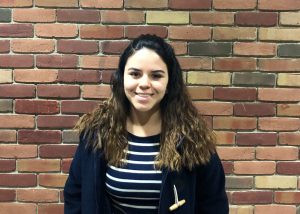
Daisy Martinez, photo by Aubrey Bartel
“Just because I’m Hispanic or Latino, people assume that I’m Mexican,” Martinez said. “It doesn’t make me mad, but I think that people are uncultured in that aspect, so I just wanted to make clear that there’s more than just Mexico in Central America and Hispanic America.”
Martinez said she learned a lot from the project, including how much the Spanish have influenced her culture. She also found a particularly interesting connection to the Aztecs.
“[The most interesting thing I learned is] that our DNA has corn it,” Martinez said. “Hispanics DNA has corn in it because the Mayans and Aztecs ate corn so much, it became something in our DNA.”
The main focus of her project was the food aspect. Martinez said the food in Hispanic America is more flavorful and has more spices than food here in the United States. She said she planned to incorporate beans and tortilla chips into her presentation.


